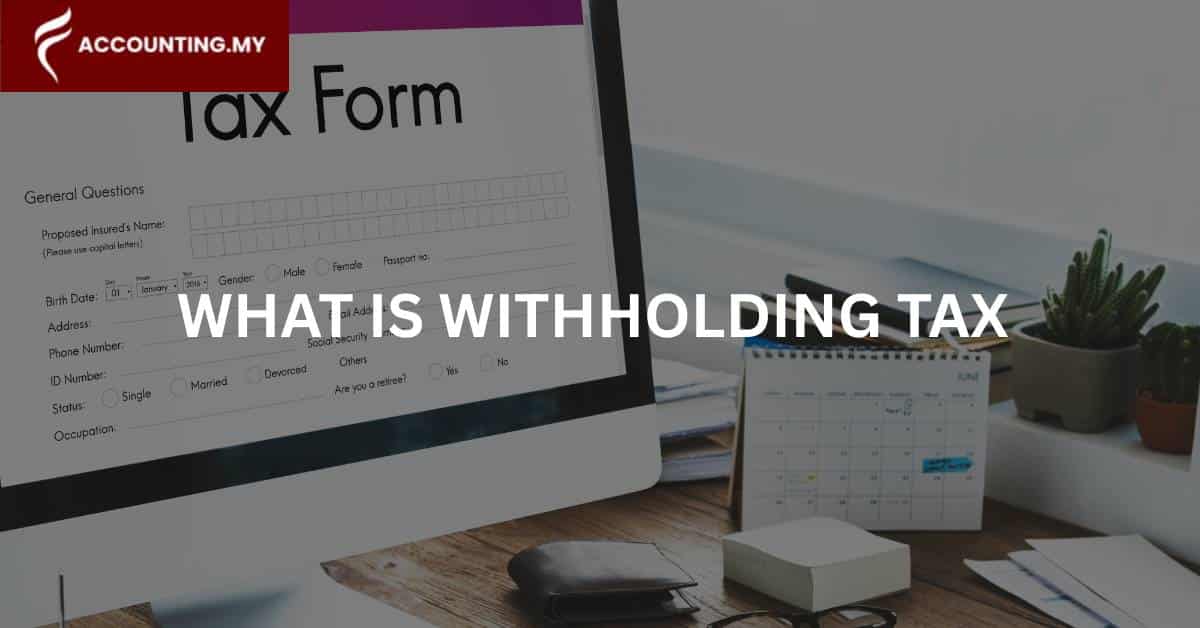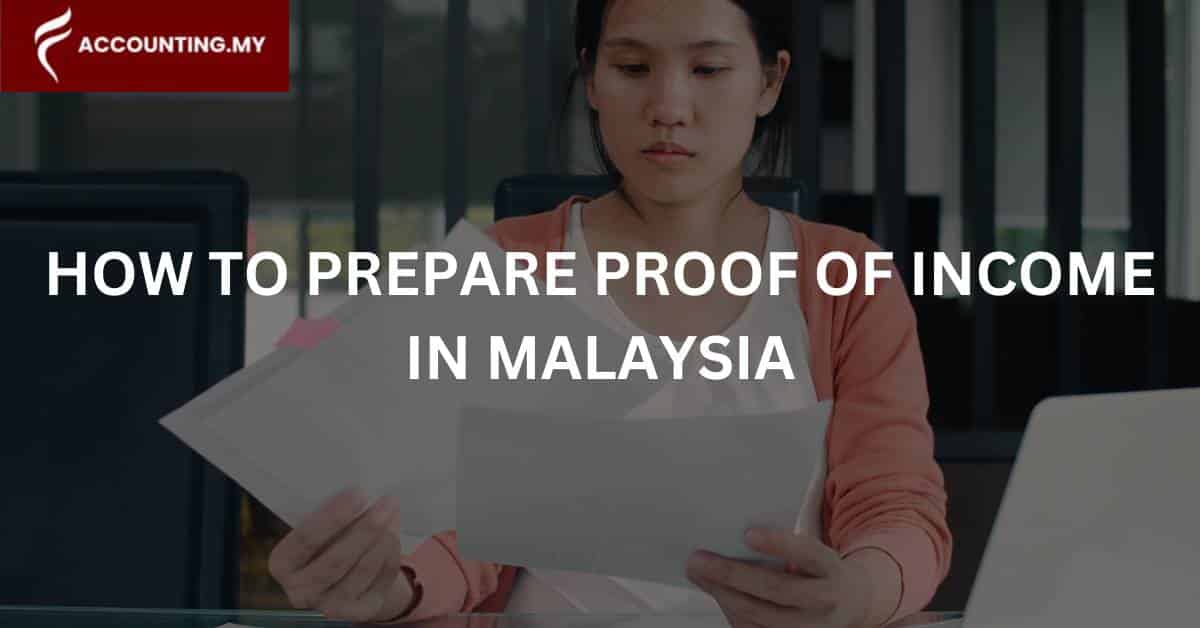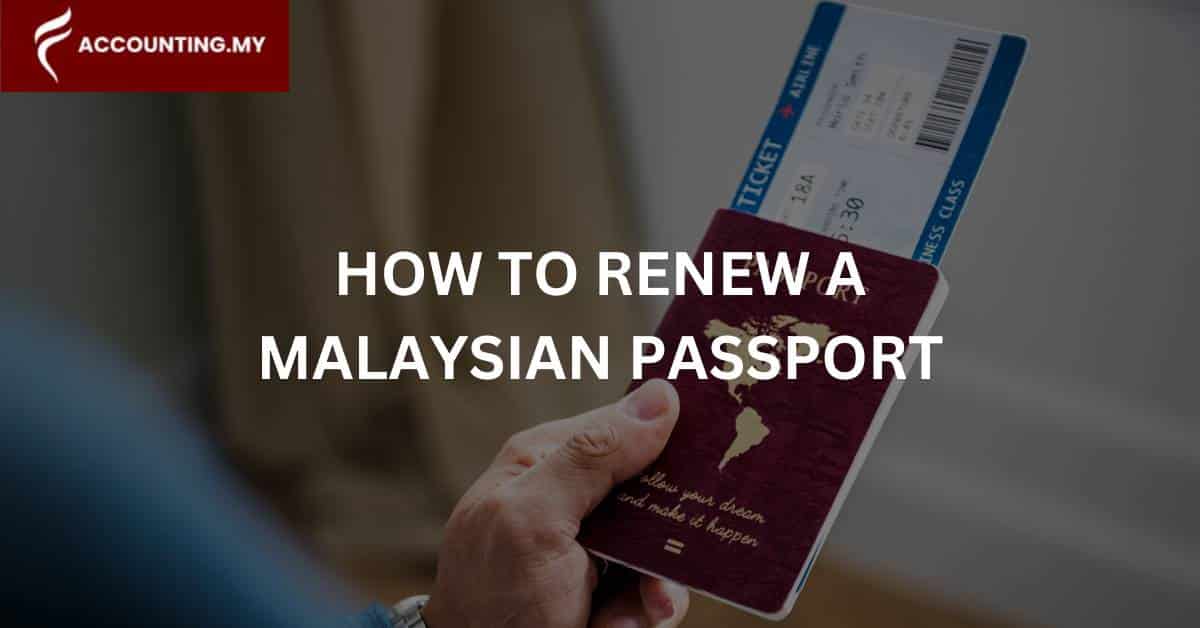Key Takeaways
- Withholding tax in Malaysia applies mainly to payments made to non-residents for services, royalties, or interest.
- Standard rates range from 10%–15%, but actual amounts depend on Double Tax Agreements (DTAs) with the recipient’s country.
- Businesses must file Form CP37 with LHDN and remit payment by the 15th of the following month.
- Late payment of withholding tax can result in penalties of up to 10% plus interest charges.
- Most common triggers: software subscriptions, overseas consultants, royalties, and cross-border service fees.
Withholding tax in Malaysia is a tax deduction businesses must make when paying certain types of income like royalties, interest, or services, to non-residents.
Picture this: you’ve just wired RM100,000 to a foreign consultant for a big project. Weeks later, a not-so lovely letter from LHDN arrives, reminding you that 10% should have been withheld and paid to the government first.
That’s RM10,000 out of pocket, and penalties on top if you miss deadlines.
Today, we’ll explain what withholding tax is, when it applies, current 2025 rates, filing steps, penalties for non-compliance, and how businesses can reduce tax burdens using Double Tax Agreements (DTAs). Let’s begin.
What is withholding tax in Malaysia?
Withholding tax (WHT) is a tax deduction at source, applied when a Malaysian business pays a non-resident for certain types of income.
Instead of the recipient handling the tax later, the Malaysian payer is responsible for deducting the tax upfront and remitting it to LHDN.
This makes sure that Malaysia collects tax revenue from cross-border transactions and no unscrupulous loopholes can be exploited.
Common examples include:
- Paying royalties for software or franchise use.
- Engaging foreign consultants or contractors.
- Paying interest to foreign lenders.
When Does Withholding Tax Apply To Businesses?
If money leaves Malaysia for work, rights, or financing provided by someone abroad, LHDN expects a portion of that payment to be withheld.
Scenarios where WHT applies
- SaaS / cloud / software: May be taxed as a royalty (10%, s.109) or a service (10%, s.109B) depending on the rights granted and facts. Classification is fact-specific.
- Consultants abroad / remote services: If the services are performed wholly outside Malaysia, payments that fall under s.4A(i) or (ii) are exempt from WHT from 6 Sep 2017 (Exemption Order P.U.(A) 323/2017).
- Royalty arrangements (intellectual property): Paying for the right to use trademarks, patents, franchise rights, or brand names registered overseas.
- Interest payments (cross-border financing): Making loan repayments or interest payments to foreign lenders, banks, or even parent companies.
Situations where WHT does not apply
- Local business expenses: Payments made to Malaysian-registered vendors, suppliers, or service providers.
- Employee salaries: Wages, benefits, and allowances paid to local staff are subject to income tax, not withholding tax.
“WHT in Malaysia is governed by s.107A, s.109, s.109A, s.109B, s.109C, and s.109F of the Income Tax Act 1967 (with s.4A defining special classes of income).”
How much is withholding tax in Malaysia (2025 rates)?
Withholding tax rates in Malaysia generally range from 10%–15%, depending on the type of payment.
Payment Type | Standard Rate | Correct Form | Notes (2025) |
Interest | 15% | CP37 | May be reduced by DTA; s.109. |
Royalties | 10% | CP37 | Includes many software/licensing royalties; s.109. |
Special classes of income (services performed in Malaysia under s.4A, rental of movable property, installation) | 10% | CP37D | s.109B. (Offshore services under s.4A(i)/(ii) may be exempt—see note.) |
Contract payments to non-resident contractors | 13% (10% + 3%) | CP37A | s.107A. Not a final tax. |
Dividends | 0% | – | No WHT under single-tier system. |
Important: Malaysia has Double Tax Agreements (DTAs) with over 70 countries. These may reduce the applicable WHT rate.
Example:
- Royalty of RM50,000 paid to a UK firm: Domestic 10% → RM5,000
- Malaysia–UK DTA royalty 8% → RM4,000 (saving RM1,000).
- UK technical fees are also 8%; interest typically 10% (or Nil in limited cases).
How Do You File And Pay Withholding Tax In Malaysia?
For most payments to non-residents, you must deduct WHT and remit it to LHDN within 1 month of paying or crediting the amount. There’s also a small-value option for ≤RM500 WHT per transaction (see Step 6).
Step 1: Confirm that WHT applies
Check two things: (a) the payee is non-resident, and (b) the payment falls under a taxable category (interest, royalties, special classes of income under s.4A.
Use the Income Tax Act and LHDN guidance to map your scenario.
Common triggers: cross-border services/technical fees (s.4A), royalties (IP/software), interest to foreign lenders, and non-resident contractor payments.
Step 2: Check if a Double Tax Agreement (DTA) reduces the rate
Before you pay, verify the DTA rate for the recipient’s country and collect a Certificate of Residence (COR) from the non-resident to support the treaty claim.
No COR = default domestic rate (10% royalties, 15% interest).
Step 3: Calculate the WHT on the gross amount
Compute WHT on the gross amount paid or credited (earlier of the two). Document the date, your one-month clock starts from there.
Step 4: Pick the right CP37 series form
Use the CP37 form that matches your payment type:
- CP37: Interest/royalties (s.109)
- CP37D: Special classes (s.109B)
- CP37A: Non-resident contractors (s.107A)
- CP37S / CP37DS: Small-value WHT (≤RM500 per transaction; bi-yearly)
Step 5: File within 1 month of paying/crediting
Submit the relevant CP37 form and remit the tax within 1 month of payment/crediting (whichever is earlier).
Example: paid on 10 Oct 2025 → due by 9 Nov 2025.
Step 6: If your WHT per transaction is ≤RM500, consider the small-value route
You can batch small WHT using CP37S (interest/royalty) or CP37DS (special classes) twice a year (by 30 June and 31 December, covering the preceding six-month windows).
Step 7: File via MyTax (e-WHT) And Pay at ByrHasil
- File via e-WHT in MyTax to generate a Bill Number
- Pay via ByrHASiL (FPX/online).
Step 8: Give the payee proof & align your contract
Share proof of WHT, as in the copy of CP37 form and the LHDN payment receipt/bill acknowledgement with your contract.
Make sure your contract clarifies who bears WHT so the economics match your intention.
Step 9: Keep records for 7 years
Like many financial records, retain contracts, invoices, COR, CP37 form, Bill Number, payment receipts, and correspondence for at least seven (7) years in case of audit.
Read more: AMLA: A Guide to Anti-Money Laundering Act for Businesses
Penalties for Non-Compliance with Withholding Tax
Failing to deduct and remit withholding tax is treated seriously under the Income Tax Act 1967.
It’s not just an administrative slip too, it can be viewed as a form of tax evasion, exposing your business to financial, compliance, and reputational risks.
- 10% surcharge on unpaid WHT
LHDN imposes an additional 10% tax on the amount you should have withheld and remitted. For example, if RM20,000 WHT was not paid, you owe RM22,000. - Disallowance of expense
The underlying payment (royalty, service fee, interest) may be disallowed as a deductible expense in your corporate income tax computation. This inflates taxable profit and increases overall tax payable. - Reputational and audit risk
Non-compliance may trigger further tax audits, scrutiny of other cross-border transactions, and reputational damage with regulators, banks, and partners.
Example scenario
A Malaysian company pays RM100,000 in royalties to an overseas licensor but forgets to deduct the 10% WHT (RM10,000).
- LHDN levies a 10% surcharge → RM1,000 extra.
- The RM100,000 payment is disallowed as a deduction, increasing chargeable income by the same amount.
- Combined effect: higher corporate tax bill plus the surcharge.
Source: Sections 107A, 109, and 109B of the Income Tax Act 1967, LHDN WHT guidance and public rulings.
How Can Businesses Reduce Or Avoid Excessive Withholding Tax?
Good news: you don’t always have to pay the full 10%–15% rate.
Malaysia has safeguards, mainly through the Double Tax Agreements that allow businesses to reduce their withholding tax liability.
1. Check Malaysia’s Double Tax Agreements (DTAs)
Malaysia has signed over 70 DTAs with partner countries. These treaties prevent double taxation and often reduce WHT rates.
- Royalty payments that normally attract 10% WHT may fall to 5% under certain DTAs.
- Always confirm the treaty rate before making cross-border payments.
Requirement: To enjoy DTA benefits, the non-resident recipient must provide a Certificate of Residence (COR) from their home tax authority. Without this, the default domestic rate applies.
2. Apply for tax clearance or relief
In some cases, businesses can request advance rulings or exemptions from LHDN if payments clearly qualify for tax relief under the Income Tax Act or a treaty.
- Payments classified as “business profits” under a DTA may be exempt from WHT if the non-resident has no permanent establishment (PE) in Malaysia.
- File supporting documents with LHDN early to avoid disputes later.
3. Structure contracts carefully
The way a payment is labelled in your contract affects whether WHT applies.
- A lump-sum “service + licence” agreement may attract 10% WHT on the whole amount, but splitting fees into service vs royalty streams can align with correct (and possibly lower) treaty rates.
- Draft contracts with tax implications in mind and get them reviewed before signing.
4. Work with tax professionals
Withholding tax rules are technical and subject to frequent updates. Engaging an experienced tax agent ensures:
- Correct WHT rate applied.
- Treaty benefits claimed with proper documentation.
- Payments structured in the most tax-efficient way.
Conclusion: Why understanding withholding tax matters in 2025
Withholding tax isn’t just another tax acronym, it directly affects your cash flow, vendor relationships, and compliance with LHDN.
The rules can feel complex, but the costs of getting it wrong are even higher: surcharges, disallowed expenses, and unnecessary audits.
At Accounting.my, we work with businesses every day to ensure their cross-border payments are structured correctly with our comprehensive tax services.
By letting us handle the details, you can focus on running your business while staying confident you’re meeting every tax obligation.
Need help with withholding tax in Malaysia? Contact us at Accounting.my for expert guidance tailored to your business.
Disclaimer: Before acting, consult a licensed tax adviser and check the latest LHDN/IRBM guidance. DTA relief typically requires a valid Certificate of Residence.
Frequently Asked Questions About Withholding Tax
It’s a tax collected on payments made to non-residents for services, royalties, or interest.
Any Malaysian entity making payments to a non-resident for taxable services or income.
Submit the appropriate CP37-series form and remit within 1 month of paying/crediting (whichever is earlier). You can file via e-WHT (MyTax) and pay through ByrHASiL (FPX).
The underlying expense is deductible once you settle the WHT and the 10% increase (if imposed). The increase/penalty itself is not deductible.
Yes, Malaysia has agreements with over 70 countries, which can reduce or exempt certain payments.
They may have service tax obligations when supplying digital services to Malaysian consumers and exceeding the threshold.















